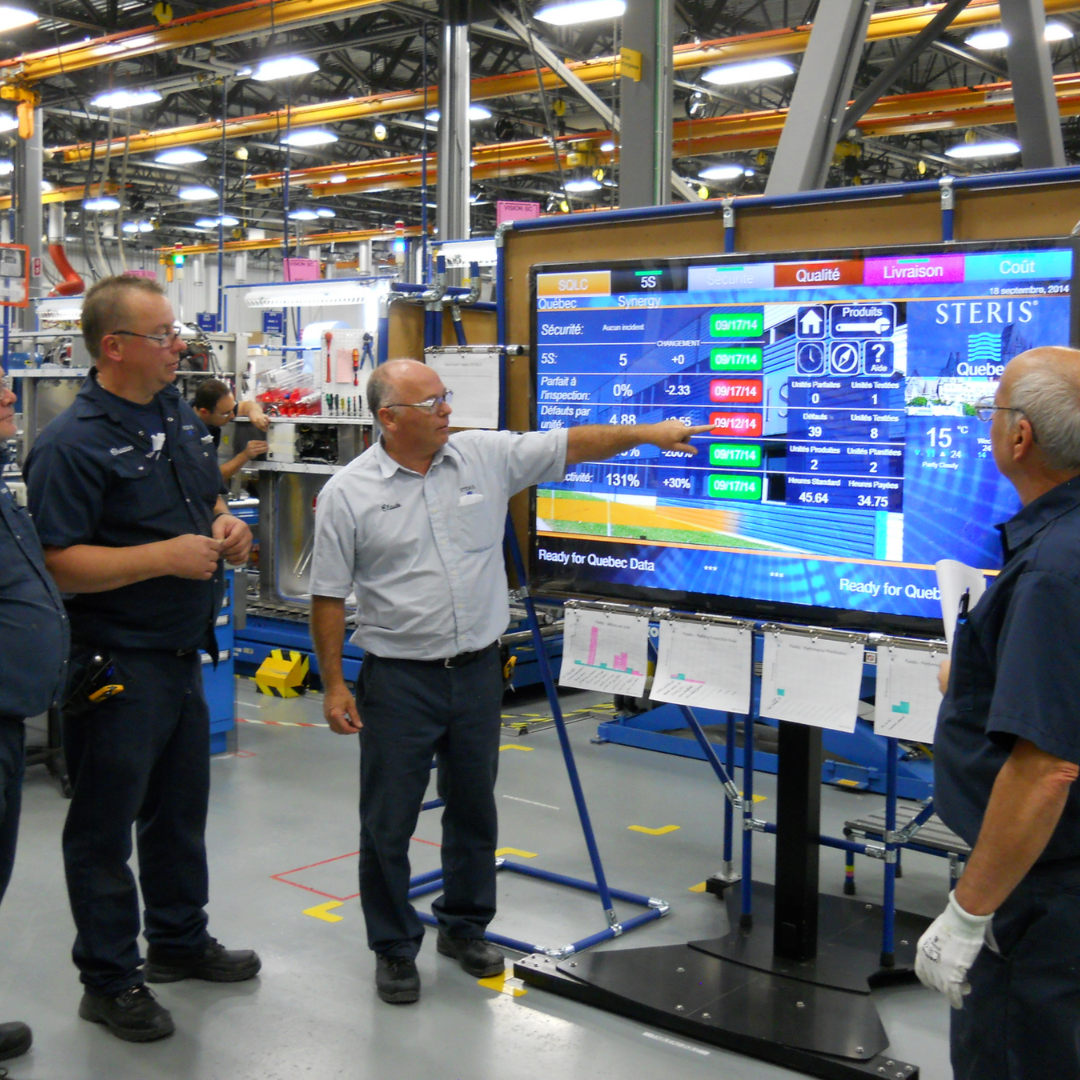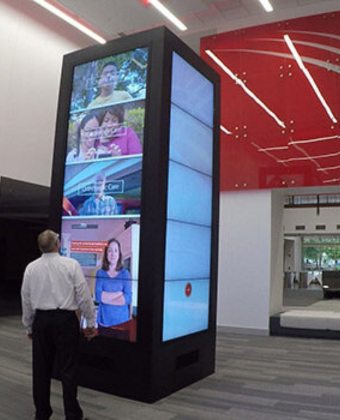Italian architect Paola Antonelli once said, “Good design is a Renaissance attitude that combines tech, cognitive science, human need and beauty to produce something.” In 2020, collaboration and digital signage technology rapidly advanced to accommodate human need. We required new solutions to conduct business, educate students and reach target audiences. These are the top 5 digital signage trends we are watching for 2021.
The digital signage ecosystem already embraces more than displays, players and content. Companies collect information (audience measurement data) to segment content for specific target audiences. We can now integrate security cameras and thermal imaging devices into digital signage ecosystems to promote health and safety by monitoring mask use, controlling social distancing and checking staff and guest temperatures.
Limiting face-to-face interaction will be important as we move forward in the post-pandemic world. Digital signage can be used to communicate with customers, visitors and guests. Meeting hosts can be notified once visitors check in at an interactive kiosk or on a mobile device. Companies can customize the guest experience based on the meeting’s purpose.
Digital Wayfinding is a responsive, valuable tool for staff and guests. Employees working a hybrid schedule or those who occasionally come to the office can use digital wayfinding to locate other staff, meeting spaces, safe areas or identify high-risk exposure areas to avoid. Interactive wayfinding also helps visitors locate meeting rooms and pertinent onsite amenities.
Interactive digital signage isn’t a new concept, but how users interact with content will adapt. Many restaurants have shifted to QR codes in place of physical menus, and we are going to see more QR code use in the future. Consumers will use their mobile devices to scan QR codes and interact with content. Businesses with existing digital signage systems may include QR codes, but those companies could also install antimicrobial film on their touch screens to encourage user interaction. For future deployments, we will also see an increase in gesture recognition software, which would allow users to interact with digital signage through a series of hand movements.
Clear messages and striking visual content are the cornerstones of compelling digital signage. Monitors must be able to effectively display content to capture one’s attention. As people begin to spend more time outdoors, digital signage content needs to be visible in all conditions—including direct sunlight. Ultra-high bright displays offer impressive images in any environment for a practical price. These commercial grade displays will become more prominent with retail stores, open air markets, restaurant patios and outdoor corporate events.
Video walls are also more affordable, which means more accessibility for businesses. A video wall installation is a great addition for any company looking to create a high-tech, creative atmosphere. Employees returning to the office want inspirational work environments. Additionally, video walls are no longer limited to boxy shapes. Curves, wraps and custom shapes blur the boundaries between digital signage and art installation.
Digital signage is no longer limited to displays and video walls. Room scheduling panels have the capacity to display corporate messaging, weather and interactive wayfinding. The Radiant Engage Room Manager is a new example of this technology. Users can do more than schedule meetings through the panel. They can browse internal communication, check local news and locate building amenities from the touch panel. The Radiant Engage Room Manager can be integrated with an existing enterprise signage system to work in tandem with the full-size displays in the building.
To display information a real-time, a digital signage system must rely on a robust content management system (CMS). A cloud-based CMS offers secure, remote access to authorize users who manage and update digital signage content. When content updates are required, approved users can log in from anywhere to make changes or add new information. Those changes are then pushed to all displays on the network.
Digital signage content templates are also a valuable solution for companies looking to streamline communications. Authorized users don’t require backgrounds in graphic design. Users can simply add new content to an existing template and push it to selected displays. Content templates from Radiant Technology designers provide consistency and cost-savings.
Consolidating content management platforms will also provide companies with new benefits. Data-driven CMS platforms can integrate with APIs and live data, which can unify the company. By breaking down departmental siloes, businesses enhance their ability to share visual communication across the organization. This is a good practice for businesses or universities with multiple sites or buildings.
A positive customer experience can no longer rely on captivating content alone. Digital signage ecosystems must be as safe as they are engaging. Our team of innovators can modernize your digital signage deployment to safely reach your target audiences.
Schedule some time for a Digital Signage Vision Planning Session.




